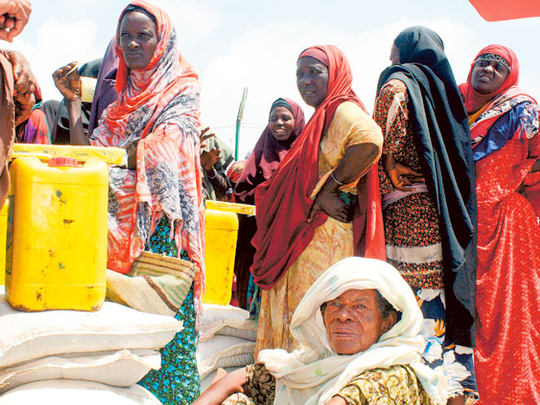
Nairobi: Over 2.5 million people in war-torn Somalia remain in crisis despite huge global aid efforts and the situation may worsen, the UN warned on Tuesday, one year after famine zones were declared there.
“Mortality and malnutrition rates in Somalia have improved dramatically but remain among the highest in the world,” Mark Bowden, the UN Humanitarian Coordinator for Somalia, told reporters in the Kenyan capital.
“We must build on the gains made since famine was declared in July 2011 or they could be reversed,” Bowden said, adding that around 323,000 children were acutely malnourished, about a fifth of all children under five.
Tens of thousands of people are believed to have died last year after extreme drought and war pushed several areas of southern Somalia into famine last July.
Although the famine was declared over in February, dire conditions remained, with concerns the situation will decline in coming months due to poor rains, a likely late harvest and ongoing conflict.
“Conflict and the lack of access to people in need remain major operational challenges,” he said, adding that donors had so far provided around half of the cash required, with a $576 million gap remaining.
“Drought in the region is recurrent and Somalia is at the epicentre of this cycle,” he said.
Southern Somalia — the main battleground between African Union troops and Ethiopian forces against Islamist Al Shabab fighters — is an area of special concern, he said, with the region’s crucial harvest hit hard by poor rains.
“The humanitarian situation will likely deteriorate further before recovery is possible,” he said. “The number of people in need will likely increase during the second half of the year.”
Somalia, ravaged by nearly uninterrupted civil war for the past two decades, is one of the most dangerous places in the world for aid workers.
The UN refugee agency said Tuesday that Somalia’s “refugee exodus crossed a new threshold” this week with one million people having fled the anarchic country, during more than two decades of war.
However, while around 30,000 refugees were registered in the region in the first six months of 2012, the rate was so far lower than last year, when a total of 294,000 fled.
The lower number of refugees leaving Somalia in 2012 was attributed to less severe drought than normal.
Recent arrivals cited “insecurity and dwindling food resources as the main reasons for their flight.” In addition, some 1.3 million Somalis still inside the country had been forced from their homes, about a third of the population.
“Somalia is one of the world’s longest and worst refugee crises,” the UNCHR added, noting that in the past decade only the conflicts in Afghanistan and Iraq had forced more than a million people to flee their homes.











